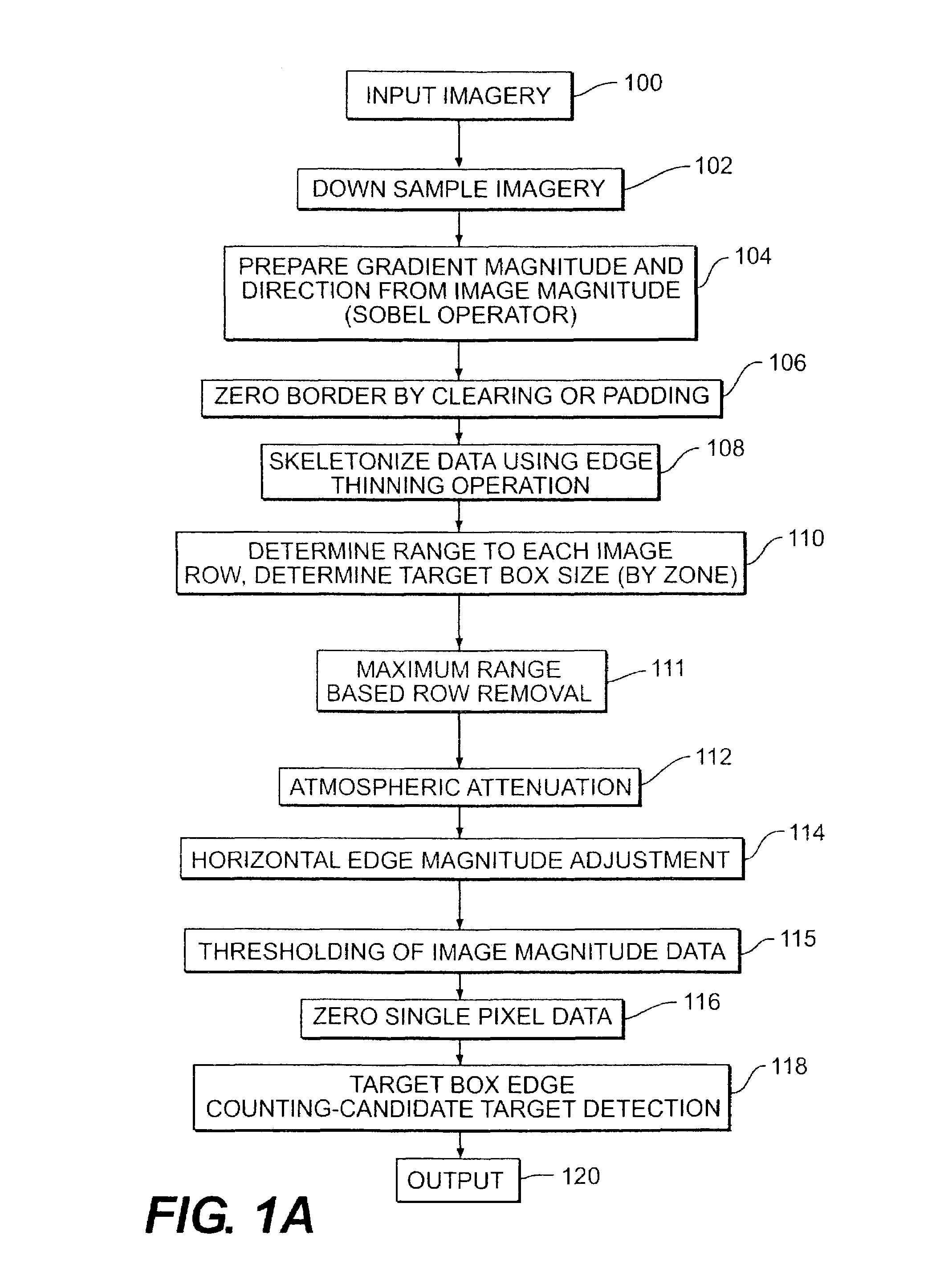Target detection method and system
a target detection and target technology, applied in the field of image processing methods and systems, can solve the problems of object or target detection, requires relatively high processor speed for a given target detection performance, and requires relatively intensive processing, so as to improve the efficiency and performance of detection
- Summary
- Abstract
- Description
- Claims
- Application Information
AI Technical Summary
Benefits of technology
Problems solved by technology
Method used
Image
Examples
case 1
[0090]If sensor Height[0091]Target Range for all 256 rows=LOS Target Range
[0092]
υd = (360 / π) × tan−1(hT) / RThd = υd × RW / Hυs = nα×υdhs nα× hdwhere υs is the vertical size of target in pixels and hs is the horizontal size of target in pixels
Case 2[0093]If angle at row(i)[0094]Target Range at row(i)=2*maximum range
These cases prevent the values from being negative unduly complicating processing.
[0095]Zone Generation
[0096]Desirably, the target box size need not be continuously varied as range varies within the image. Consequently, it is desirable to vary the target box size while keeping each target box of a constant size within a zone of the image. Consequently, the image gradient magnitude and direction data is preferably divided into plural zones of constant target box size (constant target height).
[0097]The specific zones in the imagery are generated by the following procedure. First, find the minimum and maximum values in the min verPixSize array. This array is assembled based on t...
PUM
 Login to View More
Login to View More Abstract
Description
Claims
Application Information
 Login to View More
Login to View More - R&D
- Intellectual Property
- Life Sciences
- Materials
- Tech Scout
- Unparalleled Data Quality
- Higher Quality Content
- 60% Fewer Hallucinations
Browse by: Latest US Patents, China's latest patents, Technical Efficacy Thesaurus, Application Domain, Technology Topic, Popular Technical Reports.
© 2025 PatSnap. All rights reserved.Legal|Privacy policy|Modern Slavery Act Transparency Statement|Sitemap|About US| Contact US: help@patsnap.com



